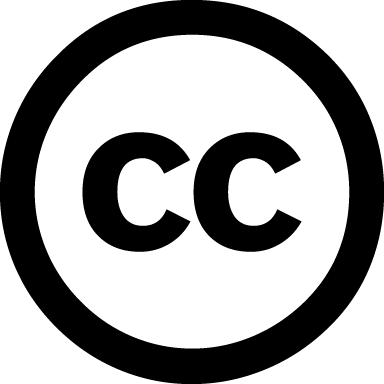CC-What? What's behind the Creative Commons licenses used by OA journals?
Published by Jennifer ZerkeeIf you are new to Open Access publishing, you might find the variety of license options used by journals overwhelming. What's the difference between CC BY and CC BY-NC-ND? What do those letters even mean? Which one is better?
It's Open Access Week, so what better time to get to know Creative Commons licenses?
 Creative Commons
Creative Commons
Creative Commons, or CC, is a not-for-profit organization that was established in the early 2000s to address the limits of copyright in an age of easy sharing and distributing of content over the Internet. Creative Commons created a suite of six licenses that can be applied to works of all kinds, that let users know how they can use, share and modify that content. These licenses essentially grant permission up front for a wide range of uses, so the user doesn't have to contact the copyright owner unless they would like permission to do something beyond the terms of the license.
Creative Commons licenses start from a position of open, permitting any and every use of your work except under the optional parameters that can be applied. Publishing with an open access journal that uses these licenses lets you share your work outside of a subscription paywall, making it more accessible and increasing the ability for others to find, use and build on your research.
Creative Commons licenses
CC licenses are composed of different combinations of four parameters that are placed around the reuse of your work:
- Attribution (BY or
 ): All CC licenses require users to cite the creator of the work.
): All CC licenses require users to cite the creator of the work. - NonCommercial (NC or
 ): Some CC licenses prohibit users from making commercial use of the work.
): Some CC licenses prohibit users from making commercial use of the work. - NoDerivatives (ND or
 ): Some CC licenses prohibit users from making modifications to the work.
): Some CC licenses prohibit users from making modifications to the work. - ShareAlike (SA or
 ): Some CC licenses require users to apply the same licenses to a new work they create with the original work.
): Some CC licenses require users to apply the same licenses to a new work they create with the original work.
How common are the various licenses in open access journals?
CC BY (Attribution only) licenses are used by nearly half of the journals listed in the Directory of Open Access Journals (DOAJ). This license permits absolutely any use of the content without permission, provided the author and source are cited. This is the most open license, and is favoured by many open access advocates.
CC BY-NC-ND (Attribution-NonCommercial-NoDerivatives) and CC BY-NC (Attribution-NonCommercial) are the next most common licenses, each used by about one-fifth of journals in the DOAJ. Both of these licenses permit any non-commercial use of the content without permission, provided the author and source are cited. CC BY-NC also permits modification of the work, while CC BY-NC-ND does not.
The remaining journals use a variety of licenses, including CC BY-NC-SA (Attribution-NonCommercial-ShareAlike) and CC BY-SA (Attribution-ShareAlike), both of which require the user to cite the author and source, and to license any resulting work that uses a modified or adapted version of the original work with a ShareAlike license as well; CC BY-NC-SA permits only non-commercial use of the work. A few journals use a custom license developed by the publisher, and very few use CC BY-ND (Attribution-NoDerivatives), which permits use without permission, provided the original is not modified or adapted in any way and the author and source are cited.
(Based on search by journal license, available at www.doaj.org, accessed September 28, 2018.)
Journal license examples
Open Access journals will typically indicate somewhere on their website which CC (or other) license will be applied to their content. You can also check the Directory of Open Access Journals (DOAJ) for journal license information.
Most journals use one specific license, for example, Higher Learning Research Communications applies a CC BY (Attribution) license to its articles:
The Journal of Classics Teaching applies a CC BY-NC-ND (Attribution-NonCommercial-NoDerivatives) license to its articles. Note that this publisher requires you to transfer ownership of copyright to them, which is somewhat unusual for an open access journal:
In rare cases you may get to choose from a selection of licenses. For example, publisher Taylor & Francis offers options including CC BY (Attribution), CC BY-NC (Attribution-NonCommercial) or CC BY-NC-ND (Attribution-NonCommercial-NoDerivatives), depending on which of its journals you are publishing in:
Custom licenses developed by publishers are often somewhat similar to CC licenses. For example, Cultural Anthropology journal content can be reused for "noncommercial, scholarly, and educational purposes,"1 provided credit to the author and publication are given:
The bottom line
Now that you know more about Creative Commons licenses, and how they can permit others to share and reuse your work, you can make an informed decision about the open access venue you publish with. You may decide that you want to publish under CC BY because it's the most open and flexible. Or you may prefer an NC license to ensure that your work can only be reused for non-commercial purposes. Or you may want to publish with a specific journal, and be content with whatever license they apply.
The license applied by a journal is only one factor of many you'll consider when you decide where to publish. The DOAJ can help you narrow down your search by discipline, license type and a number of other filters.
Happy Open Access Week!





